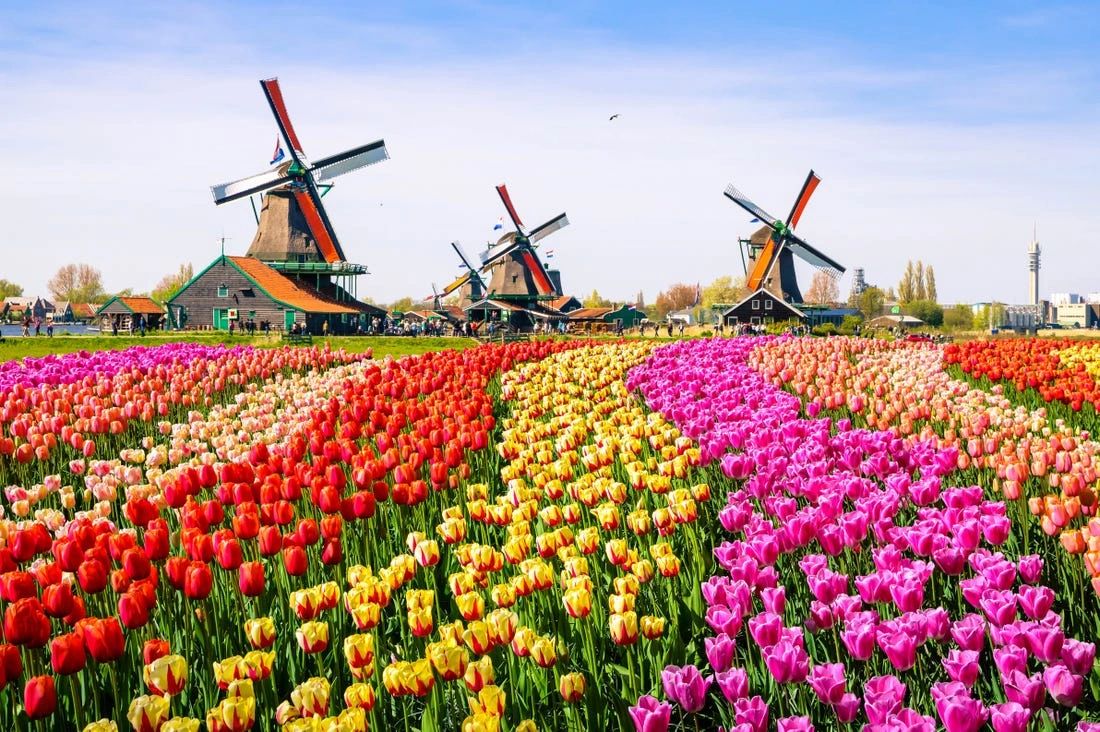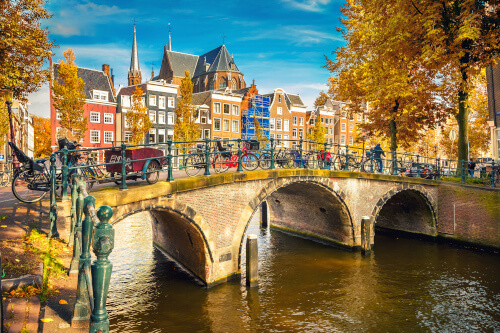When you hear the name Holland, perhaps your mind goes to a famous, much-loved performer, someone whose presence lights up the screen in various movies and television shows. It's a name that carries a certain familiarity, a sense of warmth, and a lot of talent, you know? Just thinking about the roles she has taken on, it's easy to see why her name, Holland, stands out in the vast landscape of entertainment.
Yet, isn't it interesting how a single word, like "Holland," can mean so many different things to different people? While one person might immediately picture a skilled actor, someone else might think of windmills, tulips, or perhaps even a certain distinct type of cheese. It's almost as if the word itself has its own kind of double life, carrying both a personal identity and a geographical one. This slight twist in meaning, in a way, often leads to a bit of confusion, especially when we talk about places.
This little bit of wordplay, this sense of a name having more than one meaning, actually brings us to a rather common mix-up that many folks encounter when discussing geography. So, what exactly is the real story behind "Holland" when we're talking about a country, and how does it relate to "The Netherlands"? It's a question that pops up quite a lot, and, you know, getting to the bottom of it helps us appreciate the true layout of things.
- August Francesca Coppola Cage
- Live Action Ninja Turtles
- Sarah Chapman Diddy
- Fantasia Barrino
- Cast Of Miss Congeniality
Table of Contents
- Understanding the Regions of Holland
- How Did Holland Become a Country's Nickname?
- What Makes Holland a Distinct Place?
- The Netherlands - A Broader View of a Nation
- The Geographical Layout of The Netherlands
- A Look at Historical Shifts in Holland
- Why Is the Name Holland So Often Used?
- A Closer Look at Amsterdam and The Netherlands
Understanding the Regions of Holland
Many people, it seems, tend to believe that "Holland" and "The Netherlands" are simply two ways to say the very same thing. It's a rather common habit, perhaps because the names get used interchangeably so much in everyday conversation. However, when you look a little closer at the actual geography, you start to see that this isn't quite the full picture. Holland, you see, isn't the entire country itself. Instead, it refers to a particular part of a larger whole. It’s a bit like calling a single state the entire nation; it just doesn't quite fit the facts. These two names, Holland and The Netherlands, are often used as if they are the same thing, but there's a distinct difference that’s good to get straight.
To be specific, Holland is actually made up of just two of the twelve provinces that form the country known as The Netherlands. These two provinces are called North Holland and South Holland. So, when someone mentions "Holland," they are, in a strict sense, talking about this specific western coastal area, which includes these two significant provinces. It's not the whole country, just a very important and, frankly, very well-known part of it. This distinction is pretty clear when you consider a map, for instance, which helps to show the boundaries and the relationships between these different areas. The name Holland itself, by the way, has a history that goes back a long way, coming from "houtland," which means "wooded land." It was originally given to one of the older, central areas that eventually grew into what we now recognize as the larger country.
How Did Holland Become a Country's Nickname?
So, why is it that a country officially called The Netherlands often gets called Holland instead? It’s a question that has a bit of historical depth to it. The reason is, basically, that Holland has always been the most significant and influential part of the Netherlands. Think of it this way: if one part of a country holds a lot of economic sway and cultural importance, its name might, over time, become a sort of shorthand for the entire place. This is exactly what happened here. This particular region, Holland, truly stood out, and its impact was felt far and wide across the land. It’s almost as if its success and prominence simply spilled over, causing its name to stick in people’s minds as the name for the whole country.
- Field Of Dreams Cast
- Zoe Kravitz Age
- Aaron Pierre Wife
- Alyssa Diaz Movies And Tv Shows
- Celebrity Barbies
Historically speaking, Holland was a powerful and prosperous region. From the 10th to the 16th century, this area, Holland proper, was a unified political region within a larger framework. Its economic strength and cultural vibrancy were quite remarkable, and they played a big part in shaping the future of the entire territory. This dominance meant that "Holland" became a commonly used name for the whole realm, even though it was technically just a part of it. It’s a case where a part became so well-known and so important that it started to represent the entire thing, a linguistic shortcut that stuck for centuries, you know? Even today, the Dutch government itself uses holland.com as its official travel website, which just goes to show how deeply ingrained this colloquial use has become.
What Makes Holland a Distinct Place?
When we talk about Holland as a specific geographical area, what exactly sets it apart? Well, for one thing, it's situated right there in the west of The Netherlands. This particular location gives it some pretty distinct characteristics. It's a region that has many rivers and lakes, which means its landscape is often shaped by water. These waterways aren't just pretty to look at; they've played a really important role in the history and development of the area, affecting everything from trade routes to how people lived their daily lives. The presence of so much water also contributes to the unique feel of the place, giving it a certain kind of natural beauty that is very much its own.
This region, Holland, is a geographical area and was once a formal province with a lot of historical significance. As mentioned, it was a unified political area for a good stretch of time, from the 10th century right up to the 16th century. During this period, Holland truly developed its own identity and influence. Later on, it became a province, and its ongoing economic and cultural importance within the broader kingdom meant that its name, "Holland," really took hold as a common way to refer to the entire country. It's quite interesting how a region's historical weight can shape how an entire nation is perceived and named, even colloquially. So, when people say "Holland," they are, in a sense, acknowledging this long-standing importance, whether they realize it or not.
The Netherlands - A Broader View of a Nation
The Netherlands, as a whole, is a country located in northwestern Europe. It shares its eastern border with Germany and its southern border with Belgium. To the north, it faces the vast expanse of the North Sea. This position, you know, gives it a really strategic spot on the continent, influencing its history, its trade, and its connections with other nations. It's a place that has always been very much connected to the sea, which has shaped its culture and its economy in countless ways. While it's often referred to as Holland, The Netherlands is the official and correct name for the entire nation. It's a country that is part of a larger entity, the Kingdom of the Netherlands, and most of its landmass is situated in western Europe, though there are some other parts elsewhere.
This nation, The Netherlands, is often, and sometimes incorrectly, called Holland, but it truly stands out as one of Europe's most lively and fascinating countries. It's known for many things, but perhaps most famously for its eclectic capital city, Amsterdam. This city alone draws people from all corners of the globe, offering a unique blend of history, culture, and modern life. The country itself has a rich tapestry of landscapes, from its famous flat polder lands to its historic towns and innovative modern architecture. It’s a place that has managed to preserve its heritage while also pushing forward with new ideas and developments, making it a genuinely engaging place to visit or learn about, really.
The Geographical Layout of The Netherlands
Looking at the map, the difference between Holland and The Netherlands becomes pretty clear, actually. The Netherlands is the country, the whole package, if you will. Holland, on the other hand, refers specifically to those two provinces within The Netherlands: Noord (North) Holland and Zuid (South) Holland. It's important to remember that these are just two pieces of a much larger puzzle, even if they are very significant pieces. The country itself is a bit of a low-lying land, with much of it being at or below sea level, which has led to some pretty impressive engineering feats over the centuries to keep the water at bay. This constant interaction with water has truly shaped the landscape and the character of the people living there.
The geographical region of Holland is situated on the western coast of the Kingdom of The Netherlands. This coastal position, with its numerous rivers and lakes, gives it a unique character and has historically made it a hub for trade and maritime activities. These natural features have, in some respects, contributed to its prominence and influence throughout history. The waterways provided routes for commerce and transport, allowing the region to flourish and connect with other parts of Europe and beyond. So, when you think of Holland, picture this specific, water-rich area on the western side of the country, a place that has played a central role in the story of The Netherlands, you know, for a very long time.
A Look at Historical Shifts in Holland
The history of Holland is quite interesting, marked by various shifts and changes over the centuries. For instance, in 1815, Holland found itself restored as a province of what was then called the United Kingdom of the Netherlands. This was a period of significant reorganization in Europe, and Holland's place within this new structure was a notable development. It was a time when borders were being redrawn and political entities were being redefined, and Holland was very much a part of this larger movement. This restoration set the stage for its future development and its continued importance within the broader Dutch state, you know, influencing its path for decades to come.
Then, later on, in 1840, Holland underwent another significant change: it was divided into the present-day provinces of North Holland and South Holland. This division happened after the Belgian secession, which was a major event that reshaped the region's political landscape. Belgium, which had been a part of the kingdom, became an independent nation, and this separation led to a re-evaluation and restructuring of the remaining territories. So, this split of Holland into two distinct provinces was a direct consequence of those larger political shifts, a clear example of how historical events can directly influence geographical and administrative boundaries. It's a detail that helps explain why we now have two "Hollands" within The Netherlands, actually.
Why Is the Name Holland So Often Used?
It's a really common thing, this casual swapping of "Holland" for "The Netherlands," and it makes sense when you consider the history. The reason, as we've touched upon, is that Holland has always been the most important and influential part
- Andrew Whitfield
- Who Is Jim Nantz Wife
- Actors Of Twilight Breaking Dawn Part 2
- And Cole Sprouse
- Zendaya Tom Holland


